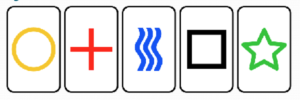Homework 1: Assumptions
This homework has three parts, A, B, and C. Answer the four questions separately for part A and B. For part C, answer the questions listed in the instructions for part C.
Submit your responses at Homework 1 – Assumptions in CANVAS. A template is suggested in CANVAS — current CUH ID and sign-in required.
Questions for Part A & B: After reading the short article answer the following questions
- Identify all comparisons made by the article.
- Organize these comparisons into a descriptive table (e.g., Word, Excel, etc.)
- What is the main inference or conclusion by the author?
- What assumption is implicit, but unstated, in the analysis presented by the author?
- How would you rewrite this story?
Note: You do not NEED R/Rcmdr to do the work required in Part A, B, or C.
After students have submitted their work, instructor will send a password to access Answers to selected Homework 1 problems
Part A. This exercise, while having nothing to do with biology, is about identifying assumptions, or rather, identifying a flawed, hidden assumption essential to an analysis. In short, this piece described a comparison between the money earned by legendary golfer Jack Nicklaus during his career which spanned years 1962 into the late 1980s, and his grandson’s 2015 contract. The grandson, Nick O’Neal, was drafted to play football in 2015 by the Buffalo Bills of the National Football League. O’Neal was last with the Las Vegas Raiders in 2020 and is an unsigned free agent.
O’HARA’S MONDAY COUNTDOWN: Family ties and finances
By Mike O’Hara for the Detroit Lions web site
Grandpa Jack Nicklaus: He became a millionaire many, many times over, but the first check the Golden Bear got as a pro was for $33.33.
It was a humble beginning for the greatest golfer ever. Nicklaus got it for finishing in a three-way tie for 50th – and last – in the 1962 L.A. Open.
It was his first tournament as a pro after a great amateur career at Ohio State. Nicklaus kept the check, which was dated Jan. 8, 1962. He went on to win three tournaments in his rookie year and make $61,869. Arnold Palmer led the money list that year with $81,448.
Grandson Nicklaus “Nick” O’Leary: His first check as a rookie tight end for the Buffalo Bills is from his signing bonus: $119,690 as part of a four-year contract after the Bills drafted him in the sixth round and 194th overall out of Florida State.
O’Leary’s contract potentially has a full value just short of $2.4 million. O’Leary’s base salary for 2015 is the rookie minimum of $435,000. If he makes the 53-player roster for the regular season, his weekly pay check will be $25,588, based on a 17-week season – 16 games and a bye week.
Jack’s purse for winning the 1986 Masters – his last major victory – was $144,000.
That’s one buck short of being exactly one third of grandson Nick’s base salary for his rookie season.
Link to the original article: broken link 31-Aug-2020
From: http://www.detroitlions.com/news/ohara/article-1/OHARAS-MONDAY-COUNTDOWN-Family-ties-and-finances/bc12b430-972e-47a8-b247-f645fab07c5c retrieved 6/8/2015
Part B. This example has more to do with biology. Body Mass Index (BMI) is “a measure of body fat based on height and weight that applies to adult men and women” (NIH).

BMI categories are
| < 18.5 | underweight |
| 18.5 – 24.9 | normal weight |
| 25 – 29.9 | overweight |
| 30 > | obese |
A study reported BMI for some professional athletes from Track & Field, hockey (NHL), and soccer (MLS) and found the following results
| Sport | Median – BMI |
| MLS | 23.01 |
| NHL | 26.39 |
| Track | 22.09 |
| Total Result | 24.89 |
The study concluded that hockey players tended to be more overweight than the other athletes. What’s wrong with using BMI for this kind of study of athletes?
Bonus. Write a function to calculate BMI given values of height in feet and inches and weight in pounds.
Part C. Can students read their instructor’s mind: The following cards with symbols “Circle”, “Plus”, “Waves”, “Square”, and “Star” were shown to the class. Students were informed that the instructor had already selected a card, and that he was thinking about that card in the present. Students were to try to “read” the instructor’s mind and predict which card was selected. Students responses were written to a 3X5 index card and turned in.

Figure 1. Images of “Zener cards,” Wikipedia
The correct card was a “Plus.”
Questions
- What was the expected probability of guessing correct, by chance alone?
- Was there evidence for ESP?
- What assumptions go into this test.
All student results
| pip | Count – symbols |
| circle | 2 |
| plus | 12 |
| square | 5 |
| star | 3 |
| waves | 11 |
| Total Result | 33 |